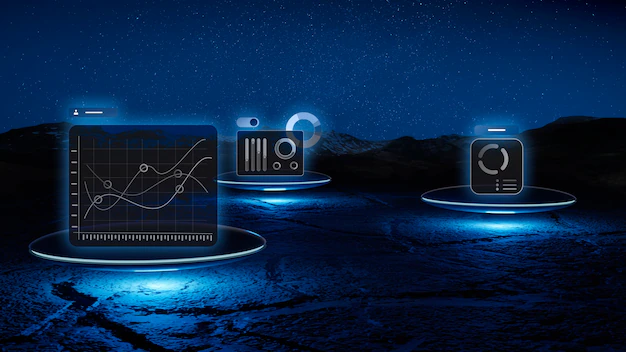In today’s data-driven world, data annotation stands as a cornerstone of modern technology. From powering artificial intelligence (AI) to enhancing machine learning (ML) models, data annotation plays a pivotal role in enabling machines to understand and process information. This blog explores what data annotation tech is, its significance, types, challenges, and its impact on various industries.
What is Data Annotation?
Data annotation is the process of labeling or tagging raw data to make it usable for machine learning models. This data can be in the form of text, images, videos, or audio, and the labels provide context that machines use to identify patterns, draw conclusions, and make predictions.
For instance:
In text data, annotation might involve tagging parts of speech or named entities.
For images, it might include labeling objects or identifying boundaries.
In audio, it could involve transcribing speech or identifying different sounds.
Why is Data Annotation Important?
Without data annotation, machine learning models would be unable to make sense of unstructured data. Here’s why it’s essential:
1. Foundation for AI and ML: Annotated data serves as training material, enabling AI and ML algorithms to learn effectively.
2. Improved Accuracy: Properly annotated data helps create robust models that deliver accurate results, essential for applications like autonomous vehicles or medical diagnostics.
3. Real-World Applications: From chatbots to facial recognition, annotated data powers everyday tech solutions.
Types of Data Annotation

Data annotation techniques vary depending on the type of data being used and the end application. Below are the main types:
1. Text Annotation
Text annotation involves labeling elements like words, phrases, or sentences to make them understandable for NLP (Natural Language Processing) models. Examples include:
Named Entity Recognition (NER): Identifying names, locations, or brands in text.
Sentiment Analysis: Tagging text based on emotions like positive, negative, or neutral sentiments.
Intent Detection: Classifying user intent in conversational AI.
2. Image Annotation
This is crucial for computer vision applications. Techniques include:
Bounding Boxes: Drawing rectangles around objects in images (e.g., cars, pedestrians).
Semantic Segmentation: Assigning a label to every pixel in an image.
3D Cuboids: Adding depth perception to 2D objects.
3. Video Annotation
Video annotation involves labeling objects in motion. For example:
Tracking moving objects frame by frame in autonomous driving datasets.
Identifying human activities in surveillance videos.
4. Audio Annotation
Audio annotation is vital for speech recognition and sound analysis. Tasks include:
Transcription: Converting spoken words into written text.
Speaker Identification: Tagging audio based on speaker identity.
Sound Event Recognition: Labeling sounds like sirens, animal noises, or machinery.
5. Sensor Data Annotation
Used in IoT and wearable devices, this involves tagging data from sensors, such as heart rate monitors or GPS systems.
Applications of Data Annotation
Data annotation is ubiquitous in technology. Here are some key areas where it is making an impact:
1. Healthcare
Training models for disease diagnosis through annotated medical images.
Enabling virtual health assistants to understand patient queries.
2. Autonomous Vehicles
Teaching self-driving cars to recognize road signs, pedestrians, and other vehicles through annotated video data.
3. E-commerce
Powering product recommendation engines by analyzing customer preferences.
Enabling visual search features through annotated images.
4. Natural Language Processing
Enhancing voice assistants like Siri or Alexa with improved understanding of languages and accents.
5. Security
Training facial recognition systems for use in security and surveillance.
Identifying threats or unusual activities in real-time.
Challenges in Data Annotation
Despite its importance, data annotation comes with several challenges:
1. Time-Consuming and Labor-Intensive
Annotating large datasets manually is time-consuming and requires significant human effort.
2. Need for Expertise
Certain applications, like medical imaging, require domain-specific knowledge to annotate accurately.
3. Scalability
As the volume of data increases, scaling annotation processes can become difficult.
4. Quality Control
Ensuring consistency and accuracy in annotations, especially with large teams or datasets, is a significant challenge.
Future of Data Annotation
The future of data annotation lies in automation and innovation:
AI-Assisted Annotation: Tools powered by AI can now handle repetitive tasks, reducing manual effort and speeding up processes.
Crowdsourcing Platforms: Platforms like Amazon Mechanical Turk or Figure Eight enable organizations to leverage a global workforce for annotation.
Advanced Quality Control Mechanisms: Automated checks and AI tools ensure annotations are accurate and consistent.
Synthetic Data Generation: In some cases, synthetic data may supplement real-world data, reducing reliance on manual annotation.
As AI and ML technologies evolve, so too will the methods of data annotation. From real-time annotation to AI-powered tools that learn and adapt, the process will become faster and more efficient.
Conclusion
Data annotation is the unsung hero behind the success of AI and ML applications. It bridges the gap between raw data and actionable insights, making it indispensable in industries ranging from healthcare to retail. However, as data volumes continue to grow, businesses must innovate their annotation processes to maintain efficiency and accuracy.
Whether it’s teaching a car to drive itself or helping a doctor diagnose diseases, the power of data annotation cannot be overstated. It’s the building block of a smarter, more connected future.










